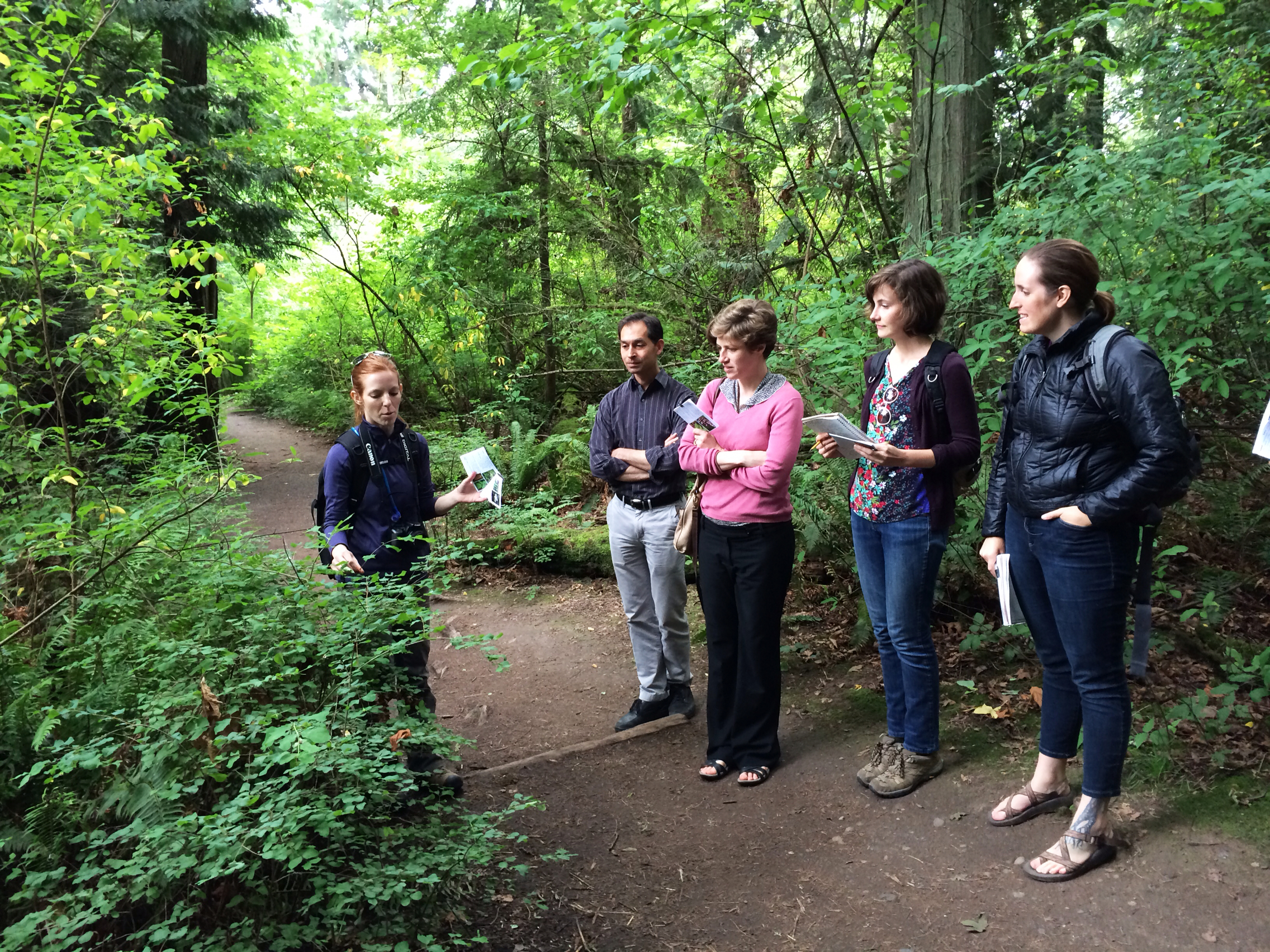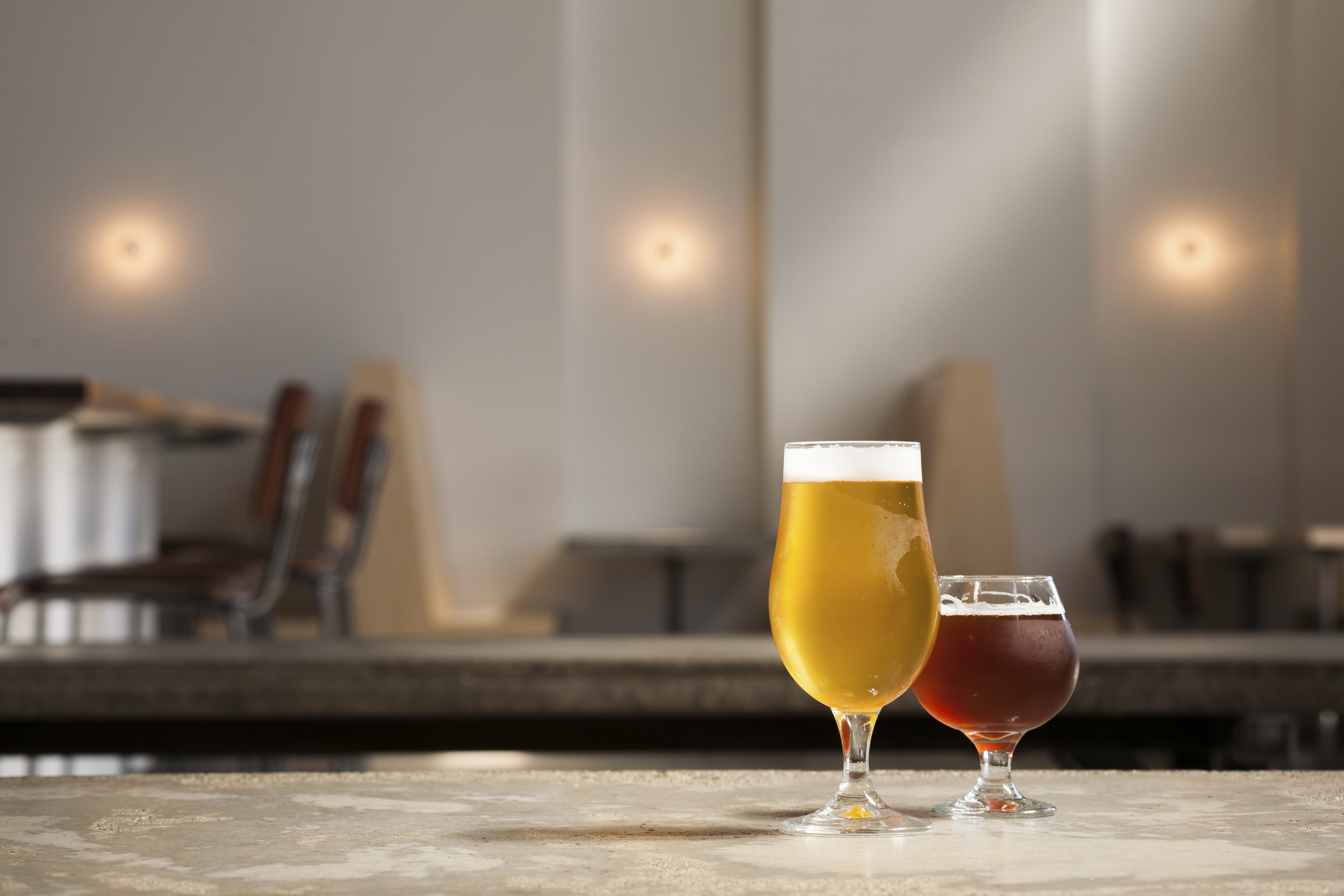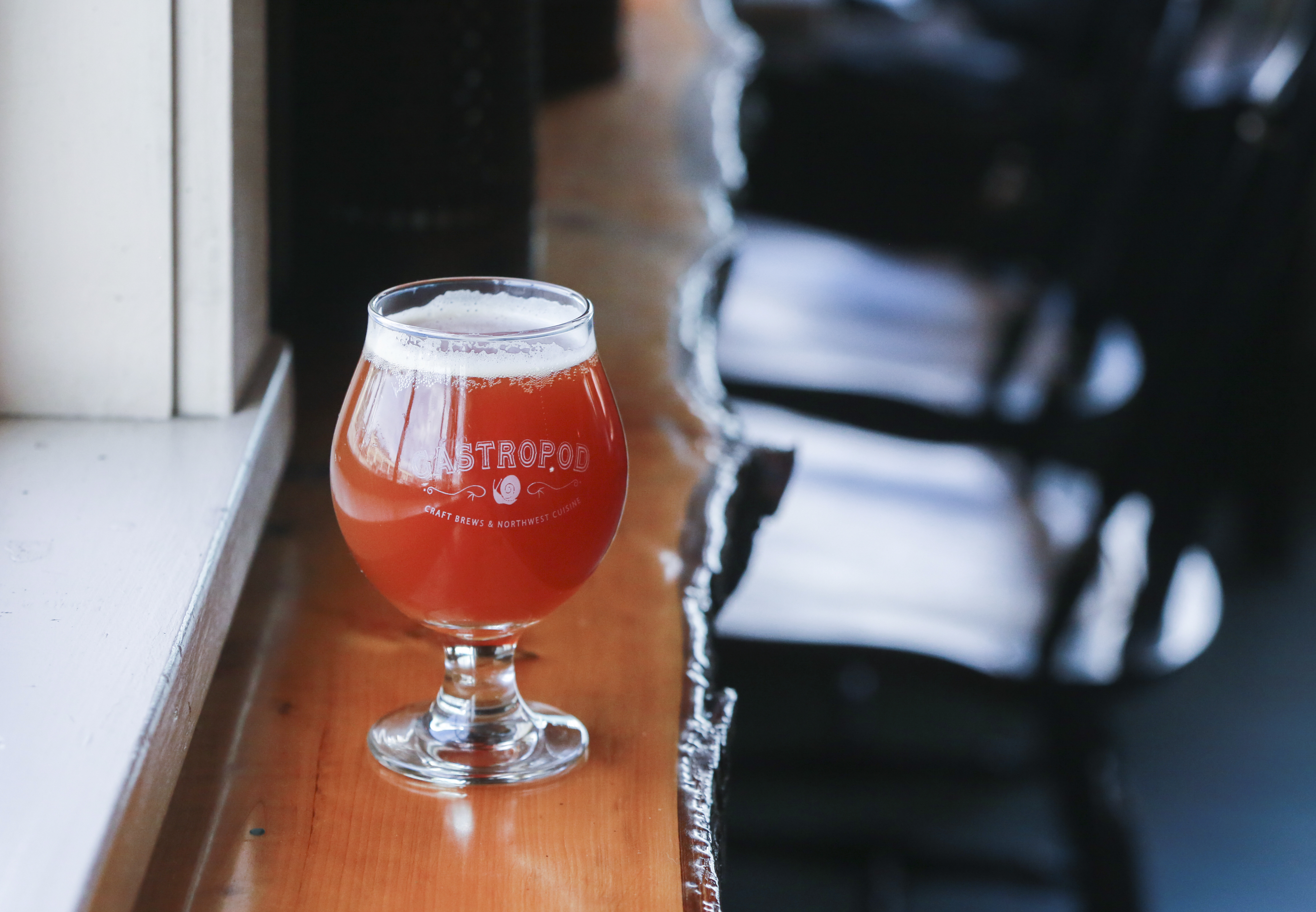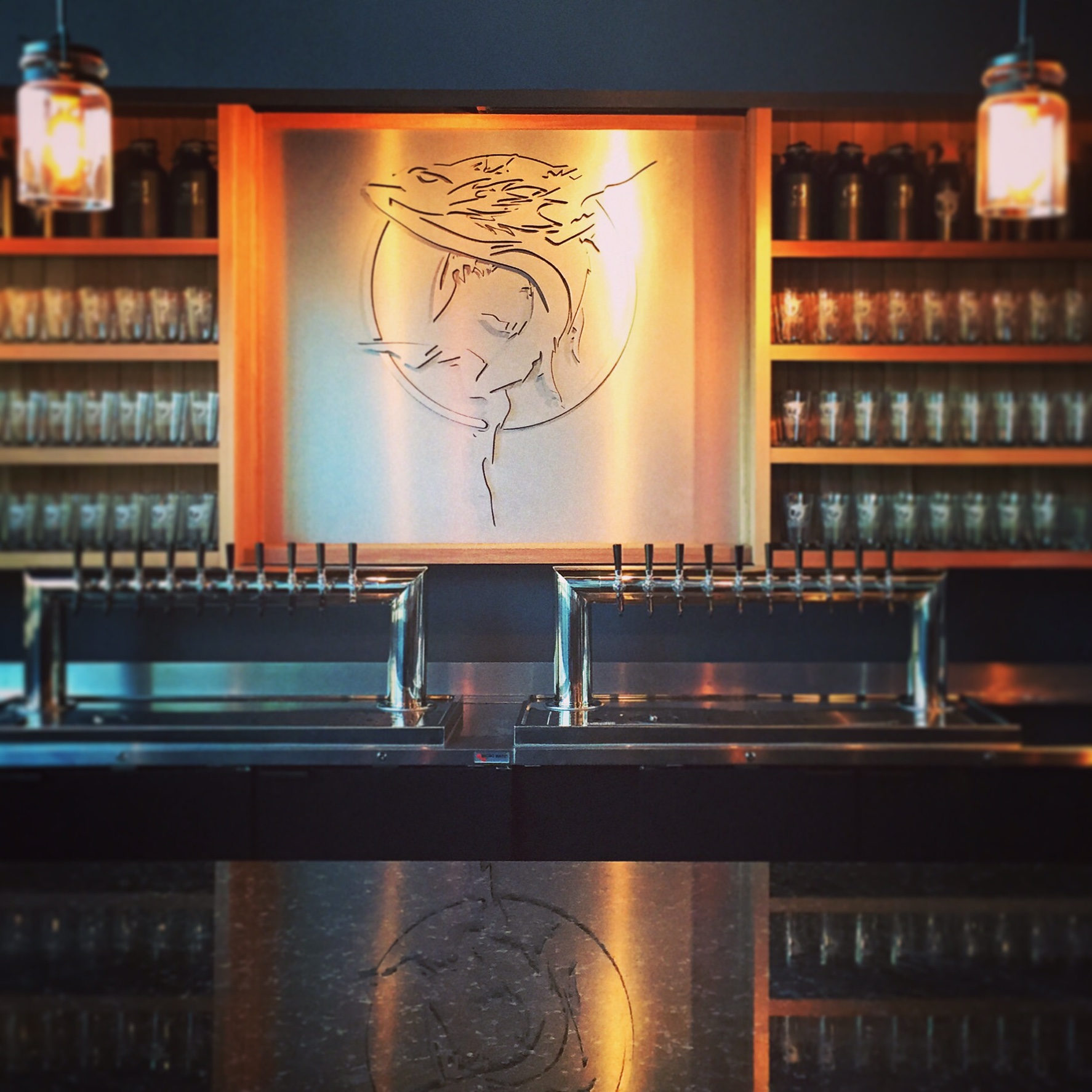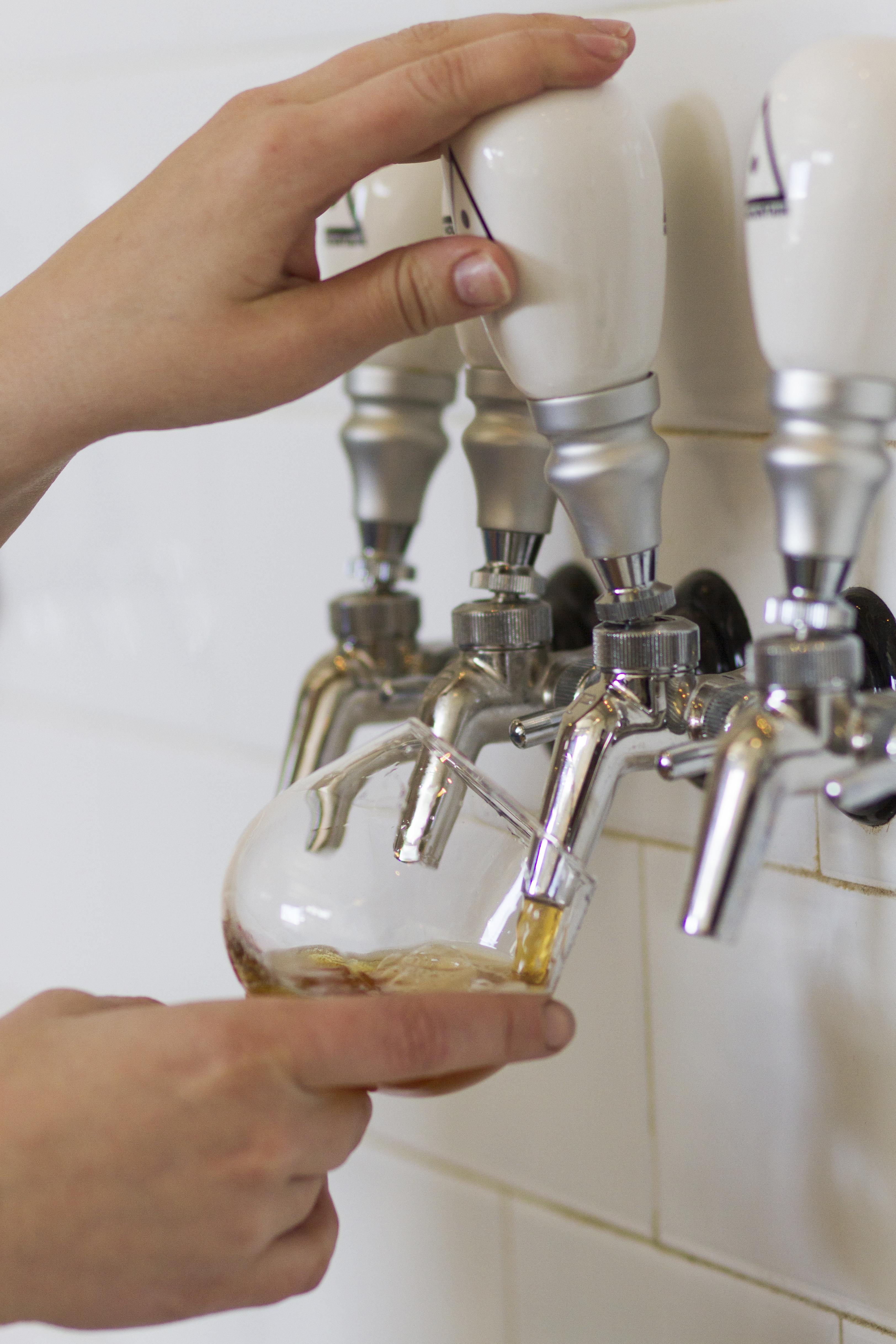photo courtesy Beers Made By Walking
Eric Steen hands me a lime-green needle he’s gently plucked off a low-hanging branch of a towering Sitka spruce in Seward Park. I tentatively nibble as little as possible, certain I’m about to be smacked in the palate with resin and bitter sap. But the soft needle tastes of sweet citrus with floral notes, the piney finish more pleasant than bitter.
For Steen, those delicate spruce tips have the potential to make some pretty great beer.
I’ve joined him, along with 10 or so others, for a hike through Seward Park as part of a program called Beers Made by Walking, which Steen founded and directs. The program gathers brewers and beer aficionados in local parks to learn about edible native plants. The brewers then use the walk as inspiration for beer-making; each participating brewer is tasked with creating a beer using locally foraged ingredients in time for a release party that doubles as a fundraiser for a local environmental organization.
Steen has organized events in Portland (where he lives), Colorado, and now Seattle. To date, his program has partnered with more than 45 breweries, resulting in 55 beers that aim to give those who imbibe them a “sense of place,” bottling the forest or meadow that inspired the flavors. Steen, who’s also an artist, calls it a “drinkable landscape portrait.” This hike kicks off the Seattle series with Epic Ales and Woodinville’s Brickyard Brewing.
Steen’s inspiration for his program came from a “combined interest in craft beer and the outdoors,” he later tells me. In 2009 he dropped a canoe in the Yukon River with a friend who taught him about the native plants they saw along the way. He later learned about Scotland’s Williams Bros. Brewing, which brews a line of historic beers with native plants like heather flower, gale, Scottish pine, and seaweed, and wanted to combine his newfound interest in native plants with his love of locally inspired beer. Beers Made by Walking was born in 2011 in Colorado Springs.
We gather at a tent near the start of Trail #3, which cuts into the center of the deeply wooded peninsula. The trail disappears into the shaded old growth before us.
Program managers Amy Kaeser and Dani Kendall start the hike with a brief overview of Friends of the Cedar River, the partnering organization and fundraiser beneficiary. She tells us the watershed covers a swath of the greater Puget Sound area that includes more than 30 cities, Seattle among them. It provides about one million residents of King County with some of the world’s cleanest drinking—and beer-making—water.
Then we venture into the woods.
photo courtesy Beer Made By Walking
Kaeser stops us after just a few yards to point out the first of many plants we’ll see on the walk: thimbleberry, with its exceedingly soft leaves the shape of a maple tree’s (“Nature’s toilet paper,” one participant calls out), and beaked hazelnut, with its round leaves and long clusters of brownish yellow flowers drooping in a formation called a catkin. At every stop she lets us try our hand at identifying the plant using booklets she’s provided; she then tells us its uses, like edibility or medicinal properties.
Between stops, talk turns to beer. One participant, an active homebrewer, is gleaning tips from Steen about how many berries it would take to make a batch of homebrew and picking Ean Forgette’s brain about his work as the owner and brewer at Brickyard Brewing. I’m alternately shooting the shit with Cody Morris, the mastermind behind Epic Ales brewery, who is here with his wife and his dog,and who tells me things are finally settling down at his Gastropod after all the recent press turned the place into a madhouse of visitors. He also hints at plans for expansion with another, larger brewhouse. I make a mental note to visit again soon.
Others want to know more about foraging from Steen and Kaeser, about the rules of thumb governing picking from nature for brewers and hobbyists. Steen tells us we can’t forage in city parks, and that brewers will need to source commercially from licensed vendors. He says they aren’t limited to using the exact species of what we find on the hike, noting that in some cases it’s better to go with a “similar, adjunct ingredient rather than the exact one we saw” if, say, the brewer is after native blackberries but can only find Himalayan blackberries to buy. In short, this hike is meant to be inspirational and informative, rather than bountiful.
We identify native trailing blackberries from their blueish stems that creep along the ground, forming a ground cover beneath an invasive Himalayan blackberry, its flower petals fading as fruit begins to form. A bright-pink Nootka rose provides color among all the green, its flowers a perfect complement in a salad, perhaps. Sword ferns jab through the understory, their broad fronds traditionally used by native tribes to dry salmon. An Oregon grape’s holly-like leaves cup clusters of purple fruit. A Western red cedar is a massive sentinel encased in fibrous red bark the natives used to make canoes and smoke salmon. I’m starting to pick up on details of the forest that I’ve never noticed in my years of Northwest hiking.
But what about the booze? Morris and Forgette seem to be taking it all in, flipping through their species-identification booklets and listening intently. I wonder if their beer brains are feeling inspired.
“I’ve not brewed with something from the forest before,” Forgette tells me later. “I used to do tons of hiking and camping, but was not educated in the edibles of the forest. The program and the beer are an exciting challenge. Hopefully it’ll also get a lot more people thinking about their immediate and forest environment as a living edible landscape instead of just a weekend destination.” Morris, for his part, has sourced from the landscape, making beer with beets, shiitake mushrooms, and huckleberries.
Forgette says he’s not sure yet what type of beer he’ll brew, but hopes to use a fall seasonal base—like a brown ale or stout—and go from there.
“In terms of beer I learned that all sorts of things could be allowable to a certain degree in different styles of beer, including berries, fern shoots, tree bark, or mushrooms,” he says.
Perhaps he’ll call it Seward Park Stout.
The next hike with Beers Made by Walking will be held on Tues., July 22 from 2 to 5 p.m. at Discovery Park, with Fremont Brewing and Naked City Brewery. The event is free but requires a prior sign-up. Tickets become available the week before the hike on beersmadebywalking.com.
food@seattleweekly.com
